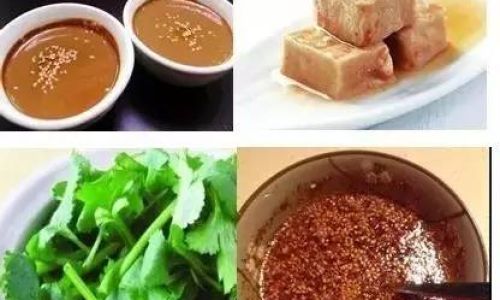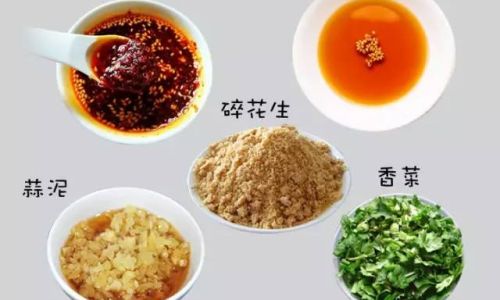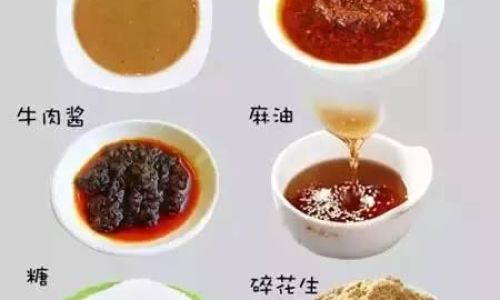Table of content
Hot pot, a beloved culinary tradition enjoyed across Asia and increasingly popular worldwide, is as much about the communal experience as it is about the flavors. The simmering broth at the center of the table serves as a canvas for diners to cook an array of ingredients—from thinly sliced meats and fresh seafood to crisp vegetables and handmade noodles. Yet, the true magic of hot pot lies not just in the broth or the ingredients themselves, but in the art of crafting the perfect dipping sauce. A well-balanced sauce can elevate even the simplest ingredients, harmonizing flavors and textures to create a symphony of taste. This article delves into the best dipping sauce combinations for hot pot, exploring classic pairings, regional variations, and innovative twists to suit every palate.
The Foundation: Understanding Dipping Sauce Basics
Before diving into specific combinations, it’s essential to grasp the role of dipping sauces in hot pot cuisine. These sauces serve multiple purposes: they add depth of flavor, cool down spicy broths, complement specific ingredients, and allow diners to customize their meals. A typical hot pot sauce station might include a dozen or more condiments, ranging from savory (soy sauce, fermented bean paste) to spicy (chili oil, Sichuan pepper) to aromatic (sesame oil, garlic, cilantro). The key is to balance these elements to create a cohesive flavor profile that enhances rather than overpowers the food.
Classic Combinations That Never Fail
The Sichuan Spice Lover’s Mix
For those who crave heat and numbing sensations characteristic of Sichuan cuisine, this combination is a must-try:
- Ingredients: Chili oil, Sichuan peppercorn powder, minced garlic, sesame paste, coriander, and a splash of broth.
- Why It Works: The chili oil provides a fiery base, while Sichuan peppercorns add a tingling麻木 (má) sensation. Sesame paste adds richness, and garlic cuts through the heat with its pungency. Coriander contributes freshness, and a touch of broth thins the mixture to the perfect consistency.
- Best Paired With: Spicy broths, sliced beef, tripe, and leafy greens like bok choy.
The Cantonese Light & Savory Blend
Cantonese hot pot emphasizes the natural flavors of ingredients, making this subtle yet flavorful sauce ideal:

- Ingredients: Light soy sauce, oyster sauce, sesame oil, minced ginger, and thinly sliced green onions.
- Why It Works: Light soy sauce forms the salty backbone, while oyster sauce adds umami depth. Sesame oil contributes a nutty aroma, ginger provides a mild zing, and green onions offer a crisp finish.
- Best Paired With: Clear broths, seafood (shrimp, fish balls), and thinly sliced meats like chicken or pork.
The Northeastern Garlic & Vinegar Elixir
Hailing from China’s northeast, where hearty flavors reign supreme, this sauce cuts through richness with acidity:
- Ingredients: Vinegar (black or rice), minced garlic, soy sauce, chili flakes, and a pinch of sugar.
- Why It Works: Vinegar brightens the palate, garlic adds pungency, and soy sauce balances with saltiness. A touch of sugar rounds out the edges, while chili flakes provide optional heat.
- Best Paired With: Heavy broths (like pork bone), fatty meats (lamb, beef belly), and starchy ingredients like tofu or potato slices.
Regional Variations: Exploring Global Hot Pot Cultures
Japanese Shabu-Shabu’s Elegant Simplicity
Shabu-shabu, known for its delicate broth and thinly sliced meat, pairs best with minimalist sauces:
- Ponzu Sauce: A citrusy blend of soy sauce, yuzu juice, and dashi. Its bright acidity cuts through the richness of wagyu beef.
- Goma-Dare (Sesame Sauce): Creamy and nutty, made with ground sesame seeds, soy sauce, and mirin. Perfect for vegetables and mild broths.
Korean Army Stew’s Bold Flavors
Inspired by the spicy, sweet, and savory notes of Korean army stew (budae-jjigae), this sauce packs a punch:

- Ingredients: Gochujang (fermented chili paste), soy sauce, minced garlic, sesame oil, and a drizzle of honey.
- Why It Works: Gochujang’s fermented depth pairs with honey’s sweetness, creating a complex balance. Ideal for sausages, ramyeon noodles, and kimchi.
Thai Sukiyaki’s Tangy-Sweet Profile
Thai hot pot, or sukiyaki, often leans into sweet-savory-spicy flavors:
- Nam Jim Seafood Sauce: A mix of lime juice, fish sauce, sugar, chili, and garlic. Its vibrant tang complements seafood and coconut-based broths.
Vegetarian & Vegan-Friendly Combinations
Hot pot isn’t just for meat lovers. Vegetarian and vegan sauces can be just as satisfying:
The Herbaceous Green Goddess
- Ingredients: Fresh basil, mint, cilantro, lime juice, vegan fish sauce (or soy sauce), and a touch of agave.
- Why It Works: Herbs provide freshness, lime adds acidity, and vegan fish sauce mimics the umami of traditional sauces. Perfect for tofu, mushrooms, and enoki.
The Smoky Eggplant Dip
- Ingredients: Grilled eggplant, tahini, lemon juice, smoked paprika, and garlic.
- Why It Works: Smokiness from grilled eggplant and paprika pairs beautifully with earthy mushrooms and root vegetables.
Advanced Tips for Sauce Mastery
- Texture Play: Balance creamy sauces (like sesame paste) with crunchy elements (fried garlic, peanuts).
- Acid as a Palate Cleanser: A squeeze of lime or splash of vinegar can reset the palate between bites.
- Sweetness Subtlety: A pinch of sugar or honey can temper spiciness without making the sauce cloying.
- Layering Flavors: Start with a base (soy sauce, vinegar), add aromatics (garlic, ginger), then finish with garnishes (herbs, chili oil).
Pairing Sauces with Specific Ingredients
- Sliced Beef: Opt for sesame-based sauces or Sichuan spice mixes to complement the meat’s richness.
- Seafood: Light, citrusy sauces (ponzu, lime-based) enhance brininess without overpowering.
- Tofu & Vegetables: Nutty sauces (tahini, peanut) or herby blends add depth to mild flavors.
- Noodles & Dumplings: Thicker sauces (black bean, hoisin) cling to starches beautifully.
The Rise of Fusion Sauces
Modern hot pot enthusiasts are experimenting with global ingredients, leading to innovative combinations:

- Truffle & Parmesan: Elevate clear broths with earthy truffle oil and salty Parmesan.
- Tahini & Miso: A Japanese-Middle Eastern fusion that pairs well with mushrooms and greens.
- Spicy Mango: Mango puree, chili flakes, and lime create a sweet-spicy sauce for shrimp and fish.
Conclusion: The Joy of Personalization
Ultimately, the best dipping sauce is the one that delights your taste buds. While classic combinations offer a reliable starting point, don’t shy away from experimentation. Mix unexpected ingredients, adjust ratios to suit your preferences, and embrace the joy of customization. After all, hot pot is as much about the shared experience as it is about savoring every bite—and every dip.
Whether you’re a purist sticking to regional traditions or a fusion fanatic blending cuisines, mastering the art of dipping sauces transforms a simple meal into a culinary adventure. So gather your ingredients, fire up the broth, and let your sauce bowl become a canvas for flavor innovation. Your perfect hot pot experience awaits—one dip at a time.






0 comments